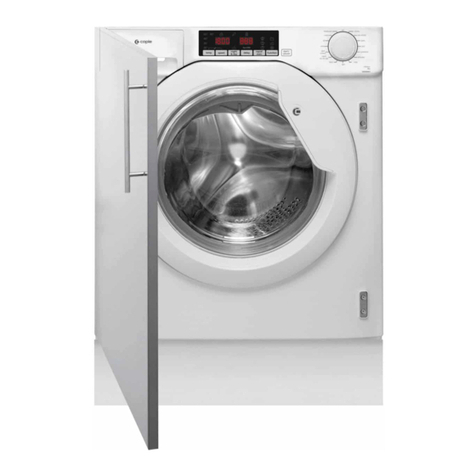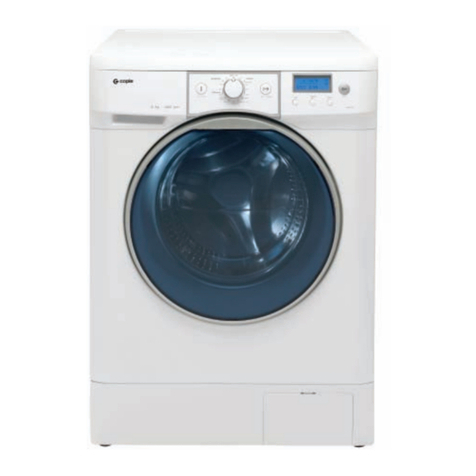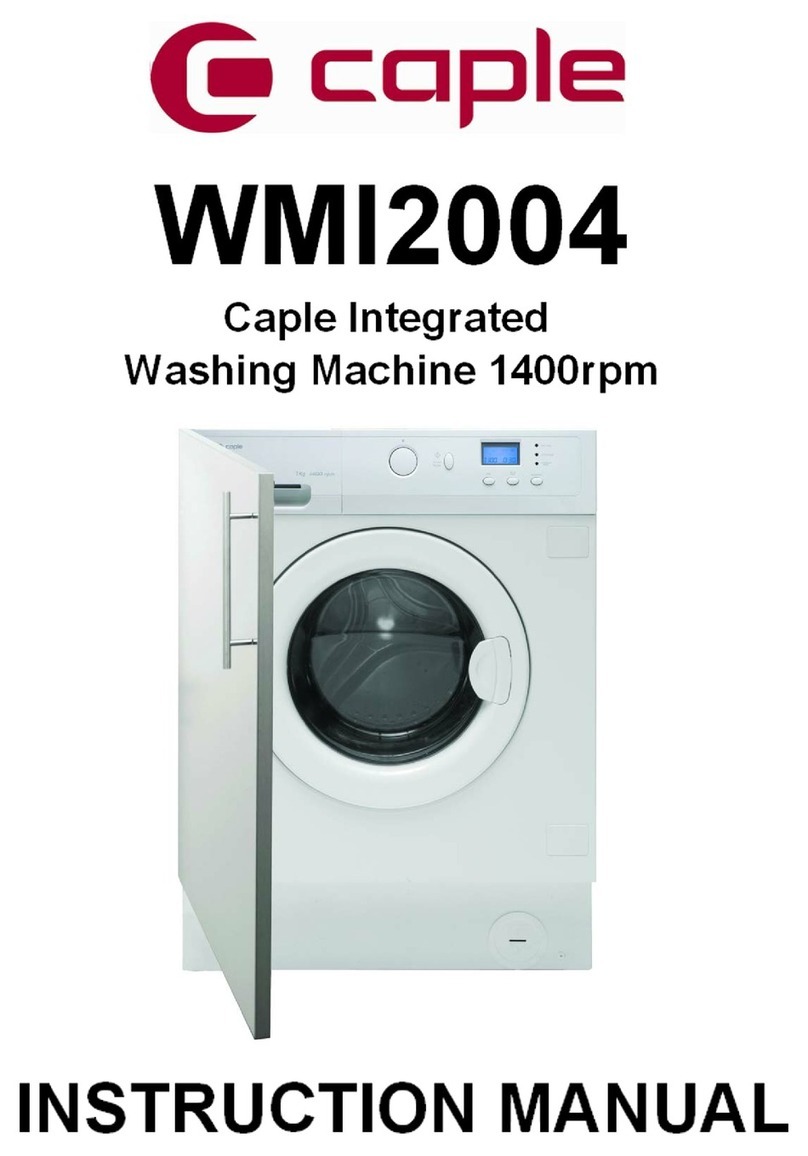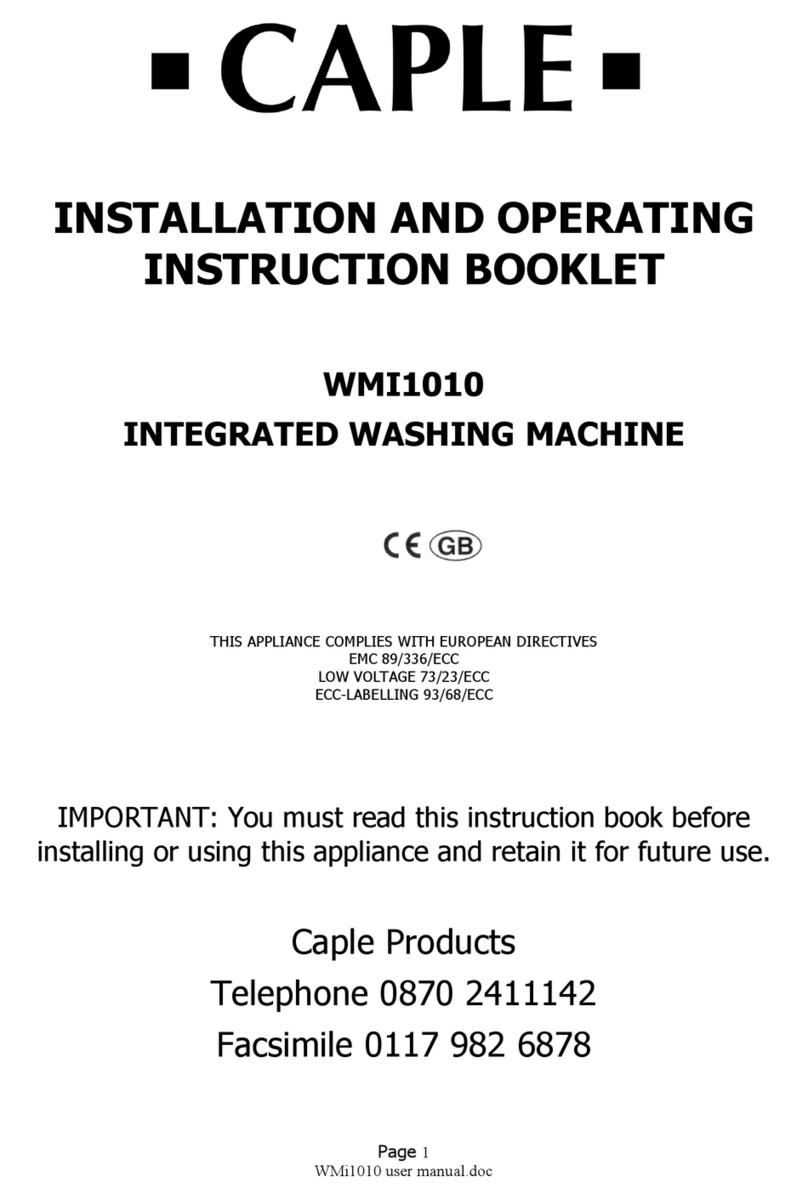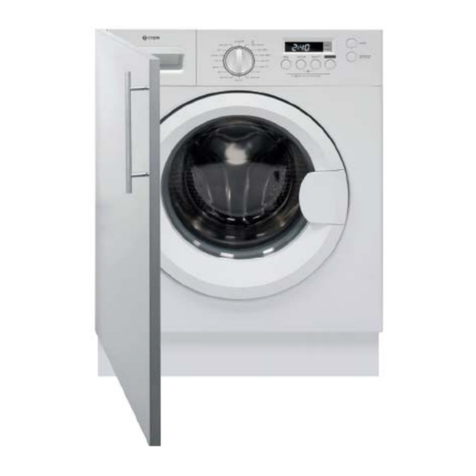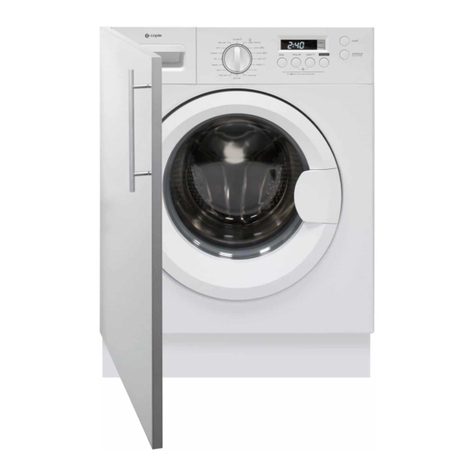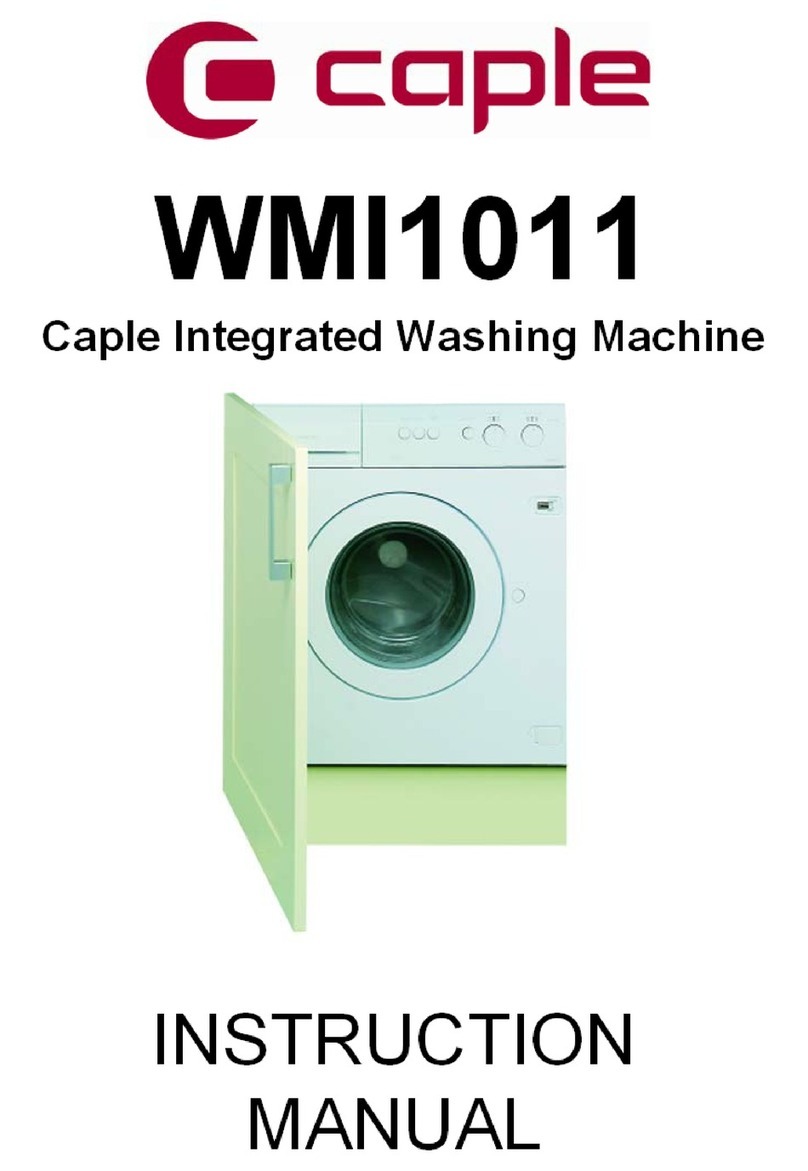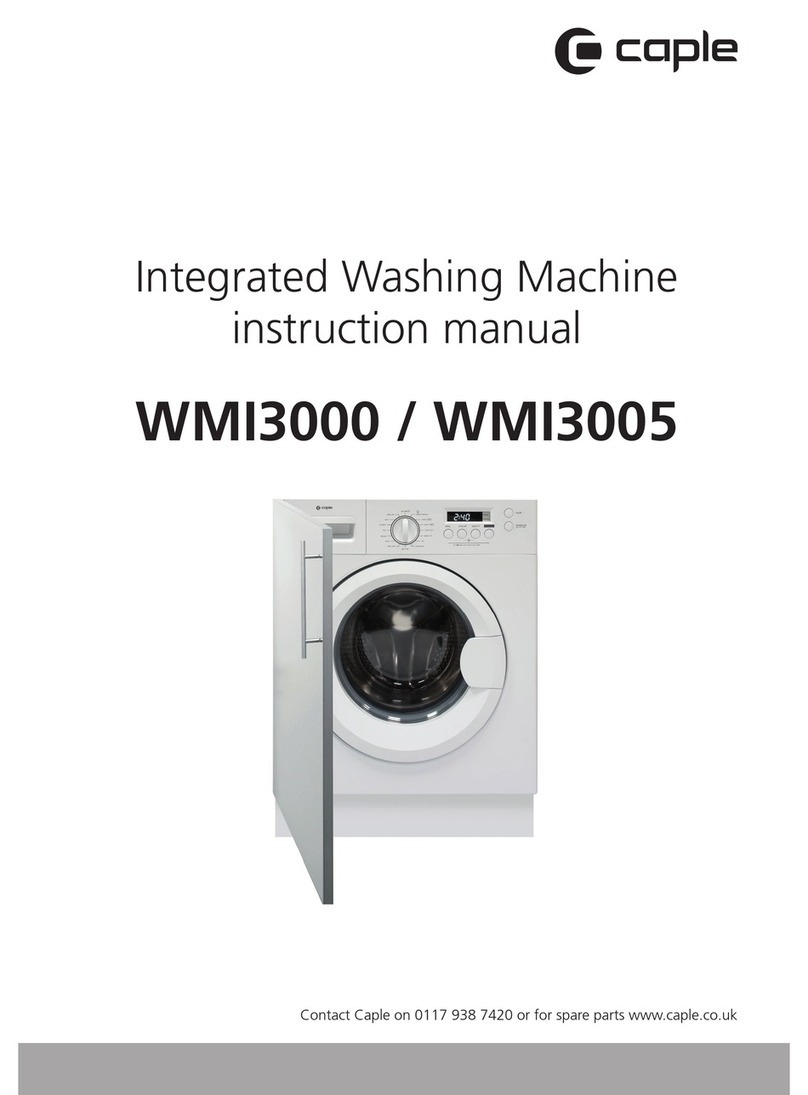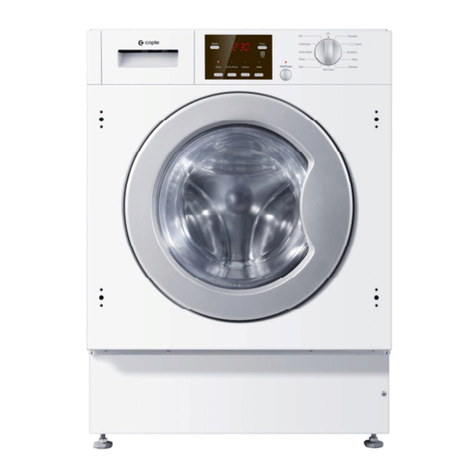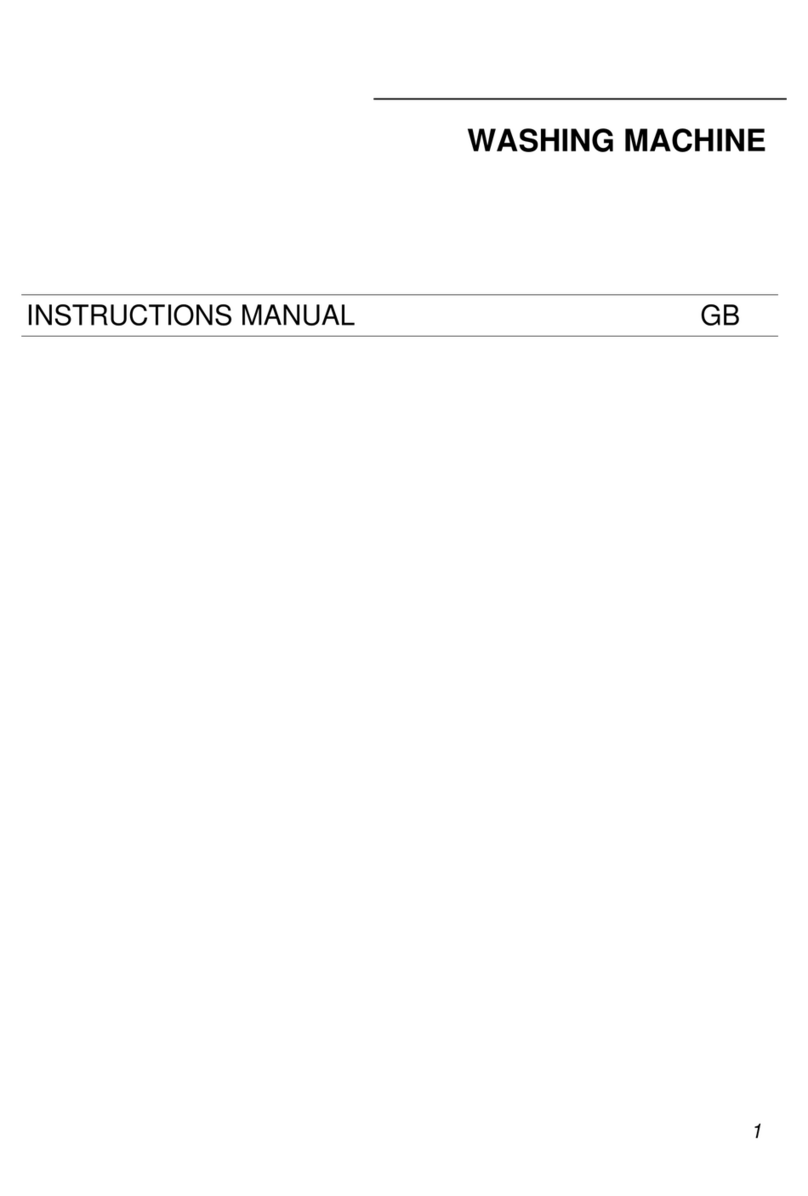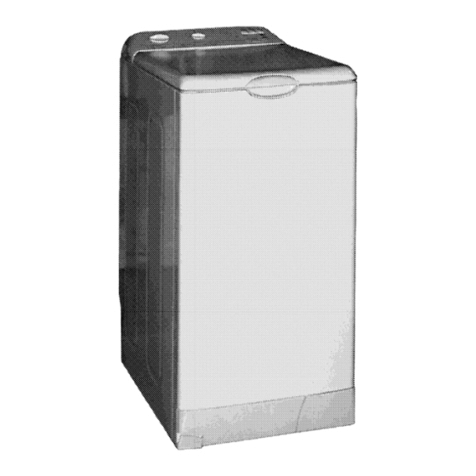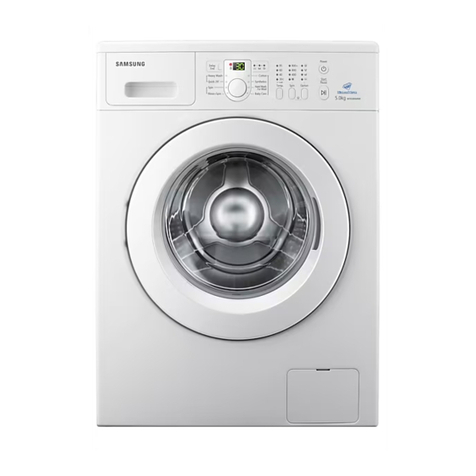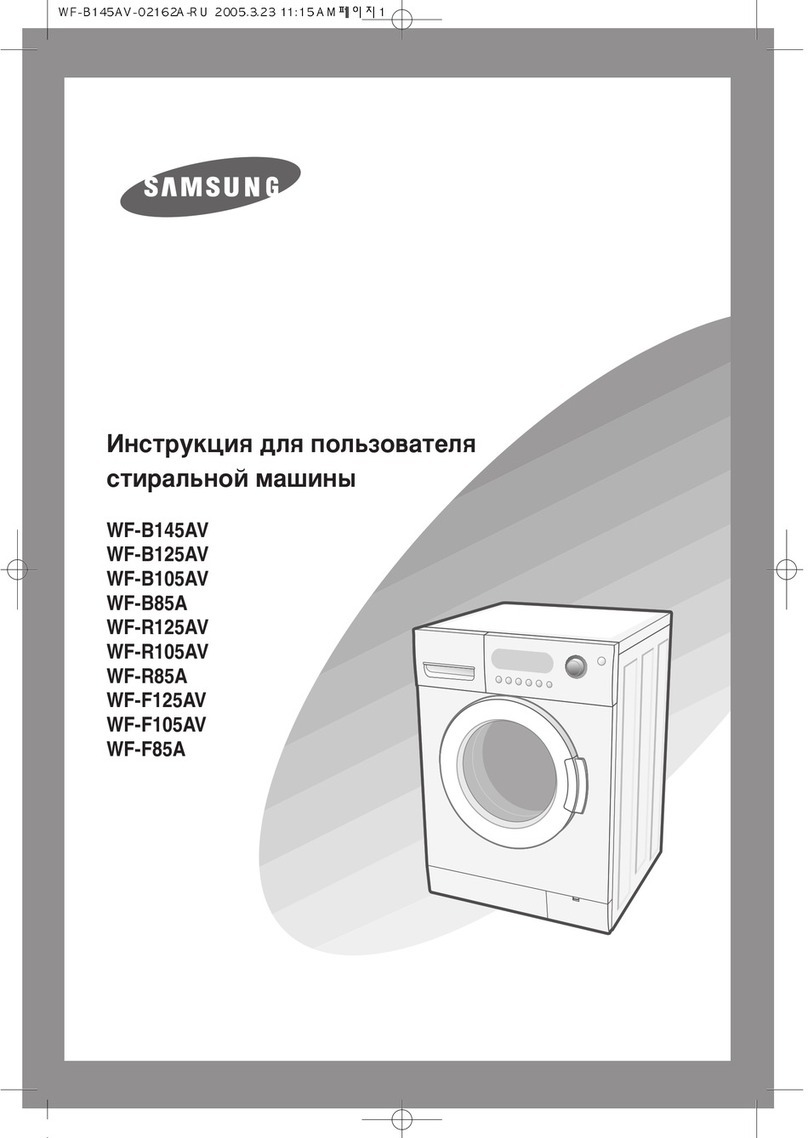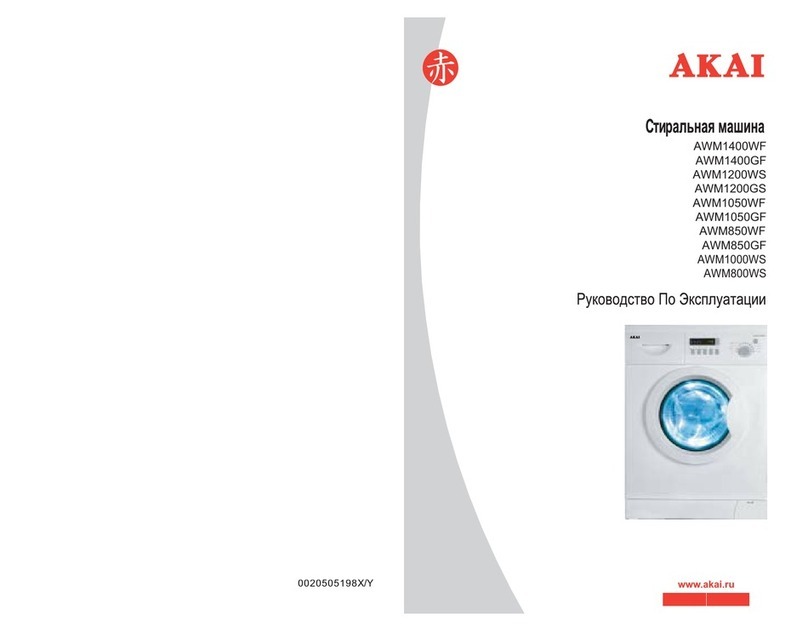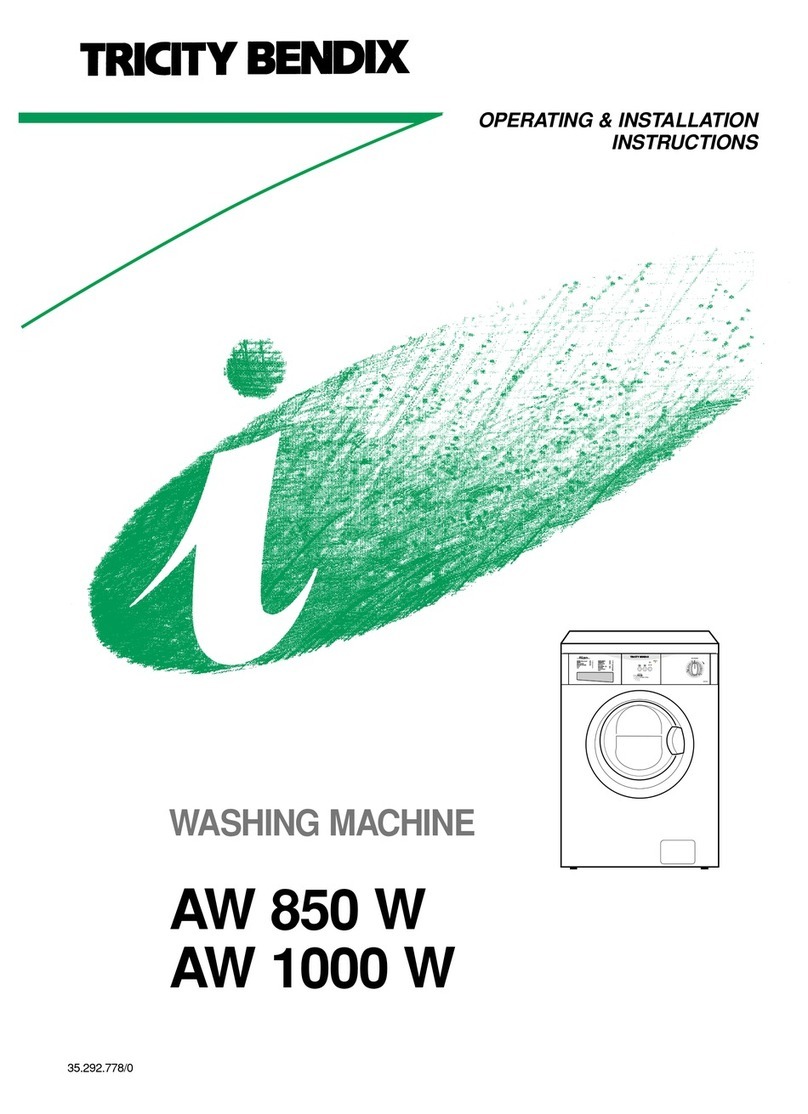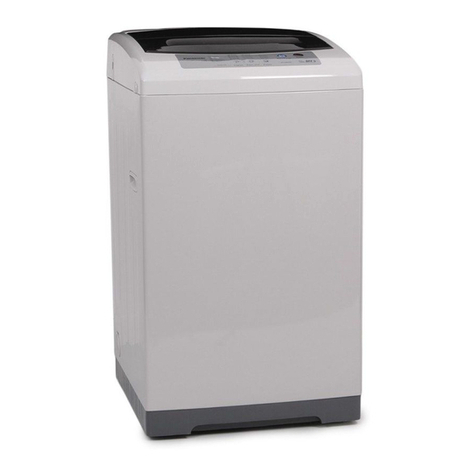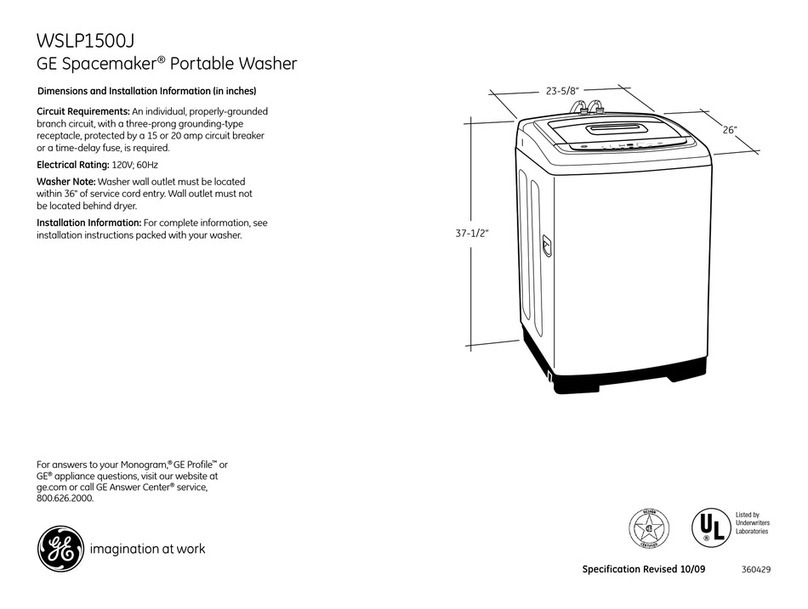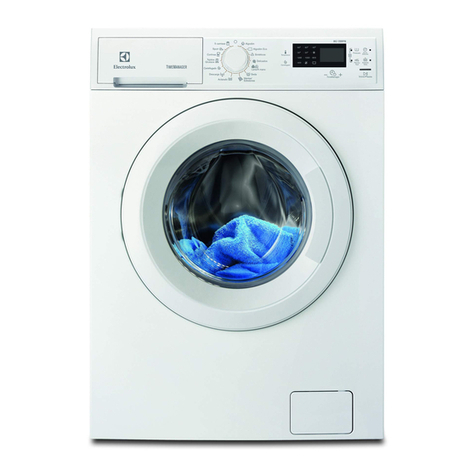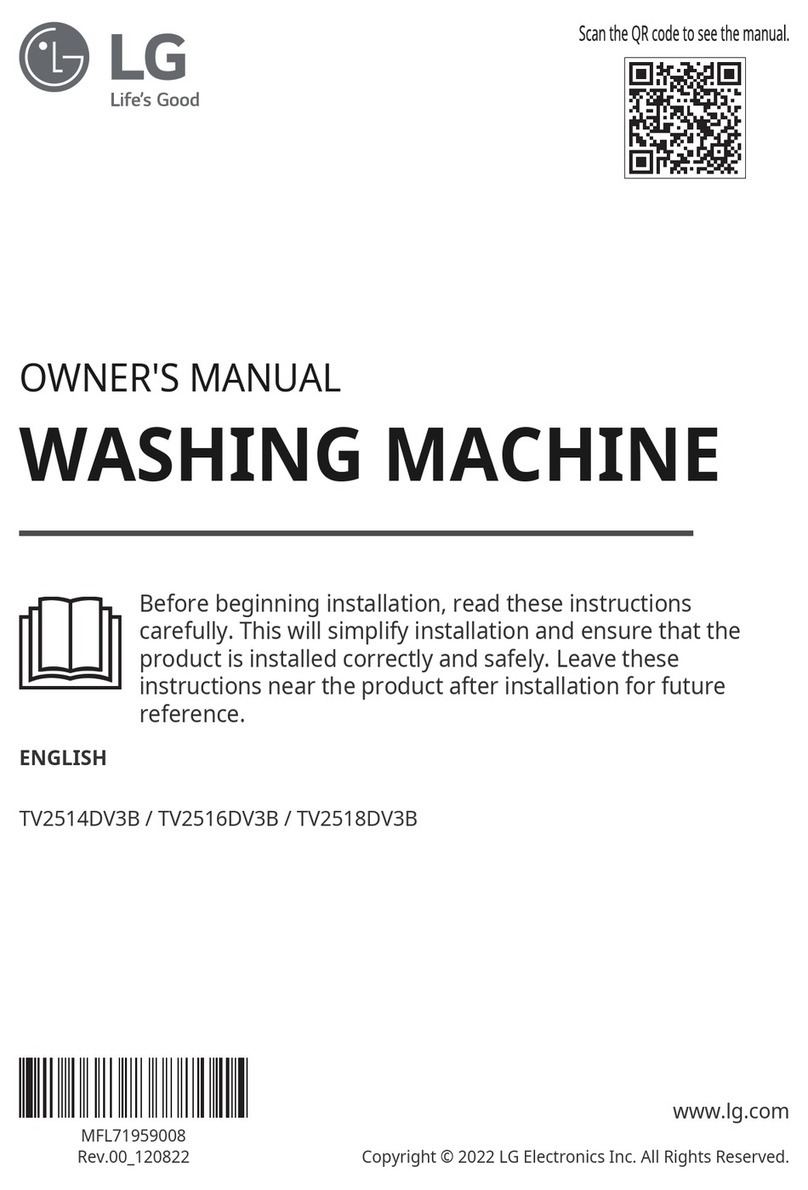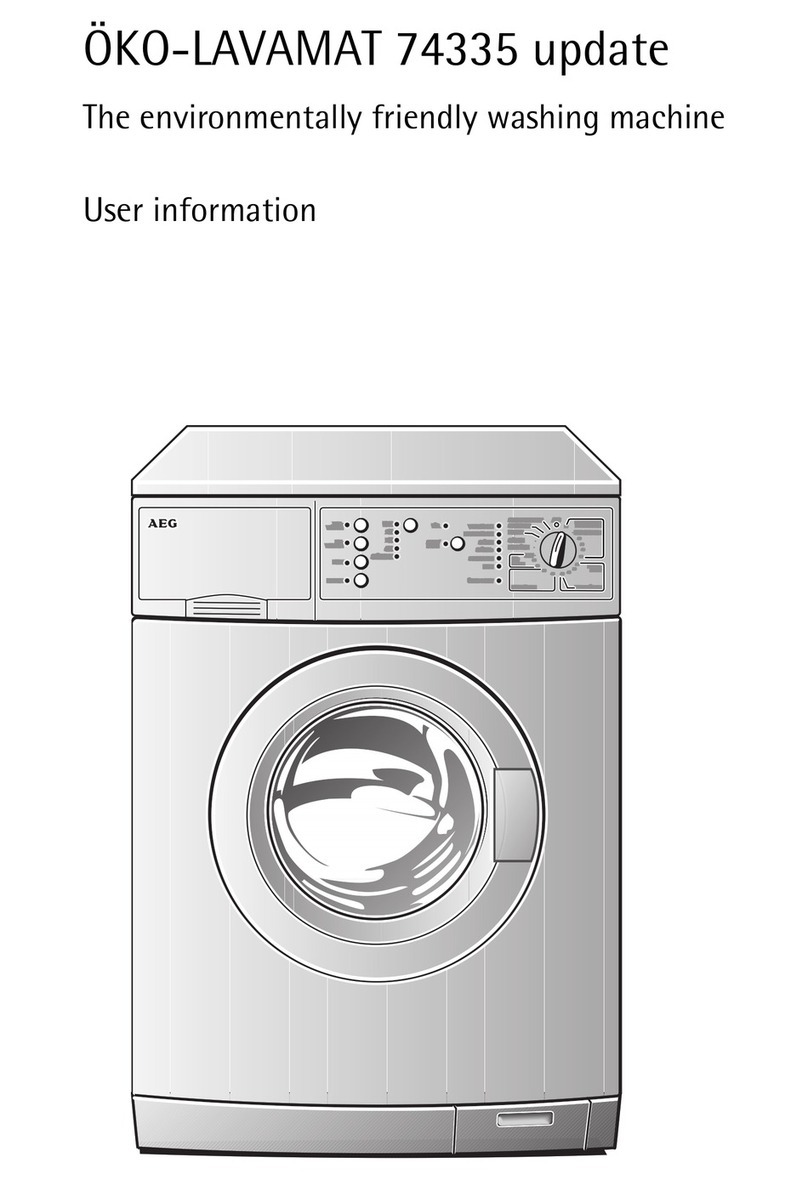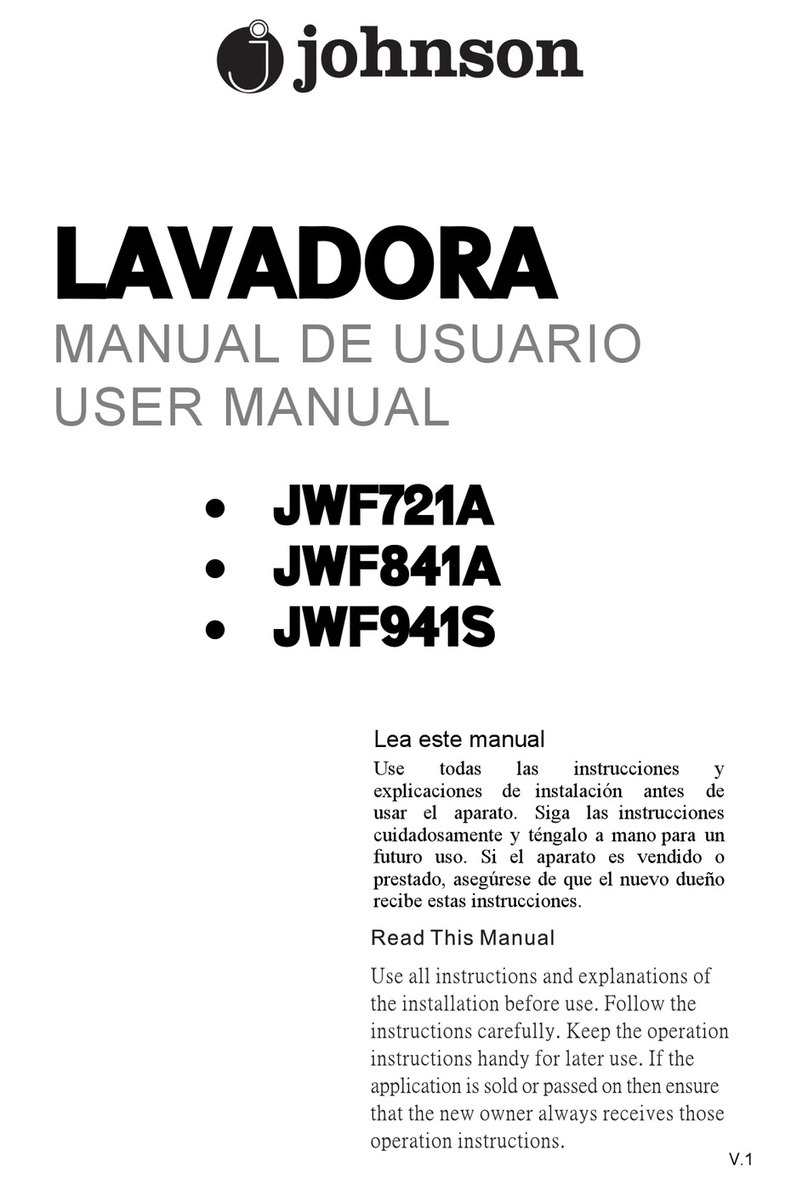70
warnings
This washing machine comes with a
manual that includes operating, maintenance
and installation instructions. Please read all
the instructions before using the washing
machine.
Do not wash items that have previously
been cleaned, washed, soaked or treated
with petrol, solvents for dry cleaning, other
inflammable substances or explosives, as
they produce fumes that could catch fire or
explode.
Do not add petrol, solvents for dry cleaning
or other inflammable or explosive substances
to the wash water as they produce fumes
that could catch fire or explode.
Do not repair or replace any part of the
washing machine or try to carry out any type
of servicing unless it is recommended in the
maintenance instructions in the manual.
Do not climb onto the machine or stand
on the open hatch door.
Do not use an extension lead or adaptor
to connect your washing machine to the
mains supply.
The machine should only be used for the
purpose it is designed for.
Follow the washing instructions
recommended by the manufacturer of the
garment to be washed.
Do not turn your washing machine on until
you are sure that:
• It has been installed in accordance with
the installation instructions.
• All the water, drainage, mains electricity
and earth connections meet the local
regulations and/or other applicable
regulations.
To avoid the risk of fire, electric shocks, injury or damage when using your washing
machine, please take the following precautions:
